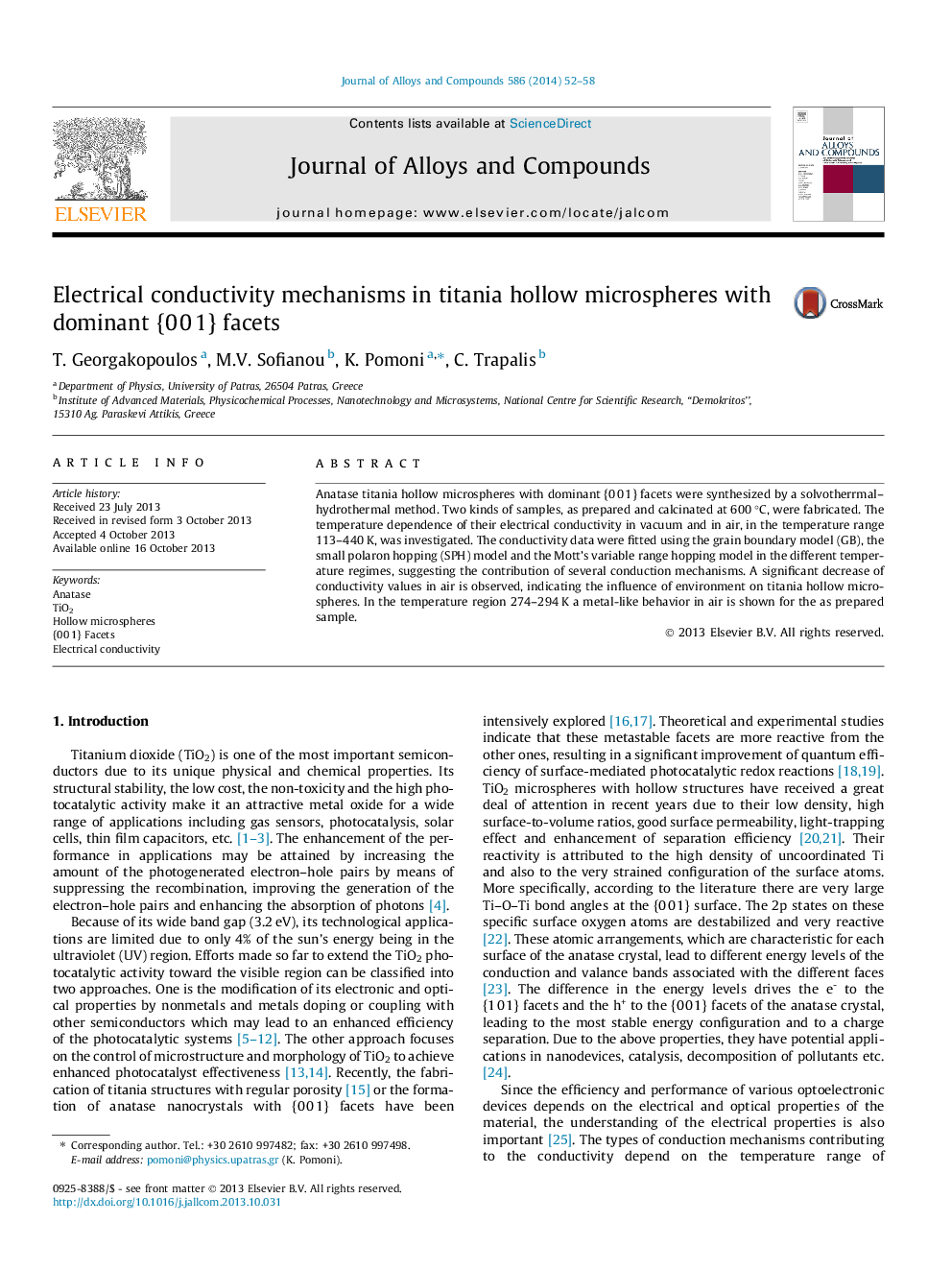| Article ID | Journal | Published Year | Pages | File Type |
|---|---|---|---|---|
| 1612612 | Journal of Alloys and Compounds | 2014 | 7 Pages |
•Anatase TiO2 hollow microspheres with dominant {0 0 1} facets were synthesized by a solvothermal method.•Electrical conductivity was studied in vacuum and in air.•Environment influences significantly the conductivity.•Different conduction mechanisms act at different temperature regions.
Anatase titania hollow microspheres with dominant {0 0 1} facets were synthesized by a solvotherrmal–hydrothermal method. Two kinds of samples, as prepared and calcinated at 600 °C, were fabricated. The temperature dependence of their electrical conductivity in vacuum and in air, in the temperature range 113–440 K, was investigated. The conductivity data were fitted using the grain boundary model (GB), the small polaron hopping (SPH) model and the Mott’s variable range hopping model in the different temperature regimes, suggesting the contribution of several conduction mechanisms. A significant decrease of conductivity values in air is observed, indicating the influence of environment on titania hollow microspheres. In the temperature region 274–294 K a metal-like behavior in air is shown for the as prepared sample.
